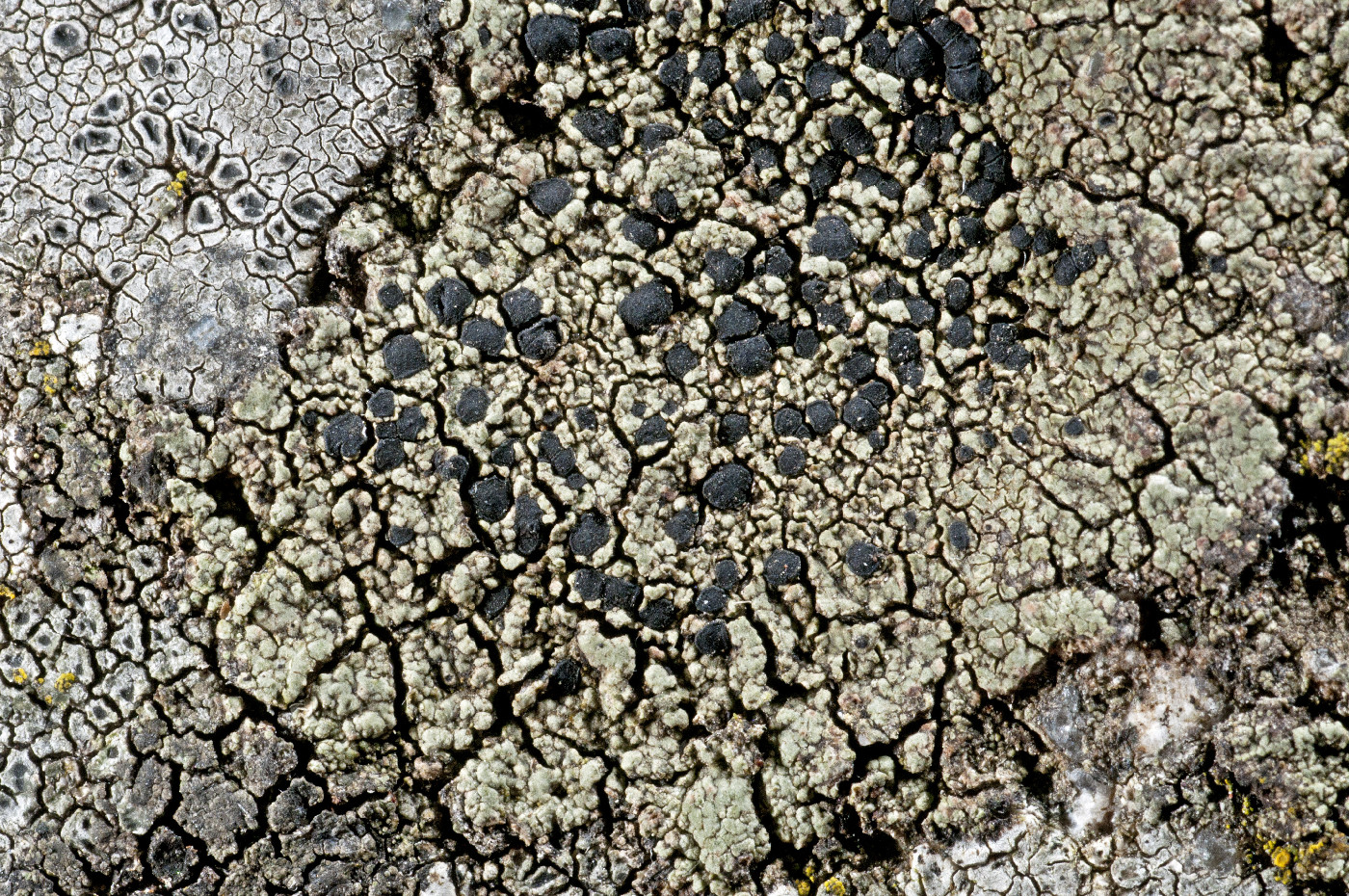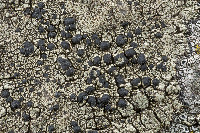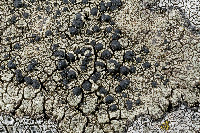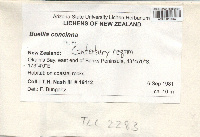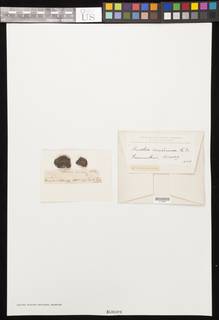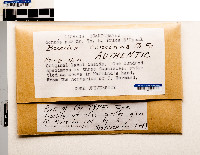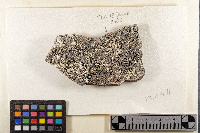
Consortium of Lichen Herbaria
- building a Global Consortium of Bryophytes and Lichens as keystones of cryptobiotic communities -
- Home
- Search
- Images
- Species Checklists
- US States: O-Z >
- US National Parks
- Central America
- South America
- US National Parks
- Southern Subpolar Region
|
|
|
|
Family: Caliciaceae
[Buellia concinna Th. Fr., moreBuellia concinna var. concinna Th. Fr., Buellia nodulosa (Lynge) H. Magn., Buellia semitensis Tuck., Buellia subconcinna (Vain.) Zahlbr., Buellia verruculosa var. concinna (Th. Fr.) Boistel, Lecidea concinna (Th. Fr.) Stizenb., Lecidea perlutescens Nyl. ex Th. Fr, Lecidea subconcinna Vain.] |
Nash, T.H., Ryan, B.D., Gries, C., Bungartz, F., (eds.) 2007. Lichen Flora of the Greater Sonoran Desert Region. Vol 3. Thallus: crustose, granular to minutely bullate, thin to moderately thickened, closely aggregated or dispersed; prothallus: absent surface: usually pale yellow to greenish yellow, rarely becoming brownish (older herbarium specimens), shiny or rarely dull, smooth, epruinose, phenocorticate, esorediate medulla: white, lacking calcium oxalate (H2SO4-) Apothecia: lecideine, soon sessile, (0.2-)0.3-0.6(-0.8) mm in diam. margin: black, prominent, usually persistent, rarely excluded with age disc: black, epruinose or rarely with faint yellow pruina, plane, rarely becoming slightly convex with age proper exciple: distinct, leptocline-type, exciple thick and not distinctly differentiated into an inner and outer part, hyphae thin-walled (mesodermatous), prosoplectenchymatous and usually ±densely interwoven (textura intricata), dull fuscous brown throughout, becoming ±carbonized by various amounts of a brown pigment (cf. elachista-brown, HNO3-), hypothecium deep reddish brown (leptoclinoides-brown, textura intricata) epihymenium: brown, pigmentation continuous with the outer exciple (HNO3-) hymenium: hyaline, not inspersed with oil droplets; paraphyses: simple to moderately branched, apically swollen, with a brown pigment cap (cf. elachista-brown) asci: clavate, Bacidiatype, 8-spored ascospores: soon brown, 1-septate (rarely with additional transversal septa forming at both ends), ellipsoid to ±citriform, rarely constricted, with tapered ends, often distinctly curved, (13-)15.6-[18.5]-21.3(-24) x (6-)7.9-[8.9]-9.9(-11) µm (n=60); proper septum: becoming thickened early but only briefly during spore ontogeny (±Physconia-type); ornamentation: microrugulate becoming rugulate with age (best seen in DIC) Pycnidia: rare, urceolate to globose, unilocular; ontogeny similar to the Umbilicaria-type conidiogenous cells: mostly terminal, rarely also intercalary (cf. conidiophore-type V) conidia: bacilliform to ellipsoid, 2-4 x 1.5-2 µm (n=20) Spot tests: usually C+ orange or sometimes pinkish, K+ yellow, KC- orange, P+ orange, CK+ orange fluorescence: UV+ pale or bright yellow to orange iodine reaction: medulla ±amyloid Secondary metabolites: arthothelin, isoarthothelin, 6-O-methylarthothelin, 4, 5-dichloronorlichexanthone, 4, 5-dichloro-6-O-methylnorlichexanthone, asemone and thiophanic acid, gyrophoric, lecanoric, and orsellinic acid (J. A. Elix, HPLC). Substrate and ecology: epilithic, on a variety of hard, siliceous (HCl-) rock substrates, often on vertical cliffs World distribution: temperate to subarctic, subalpine and alpine climates throughout the Northern Hemisphere Sonoran distribution: moderately common at higher elevations of Arizona, southern California, and Sonora. Notes: In the Sonoran Region, granular to minutely bullate thalli may superficially be mistaken for B. subaethalea, a species that does not react with C, and has distinctly ornamented and "banded" spores. |
|
|
|
Powered by Symbiota

